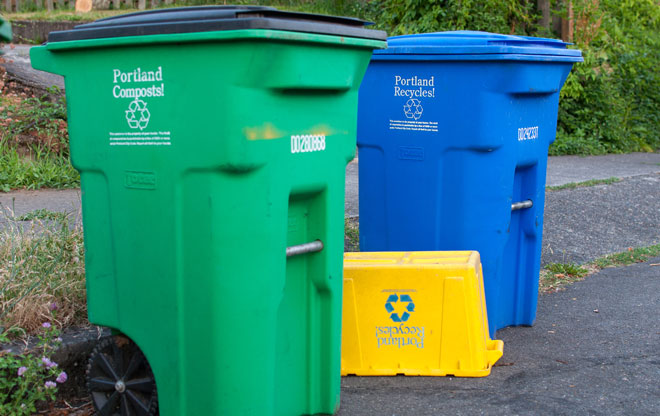
One of the World's Best Recycling Programs
It may be hard to believe now, but Portland had trouble getting residents to participate in the city’s curbside recycling program early on. The city rolled out bright yellow bins with hopes of sparking a friendly competition between neighbors to fill the bins each week. It worked. Today, Portland boasts one of the most successful curbside recycling and composting programs. One year into the new system, 38 percent less residential waste entered the landfill, and commercial compost production tripled.
Image: Robin Wilcox 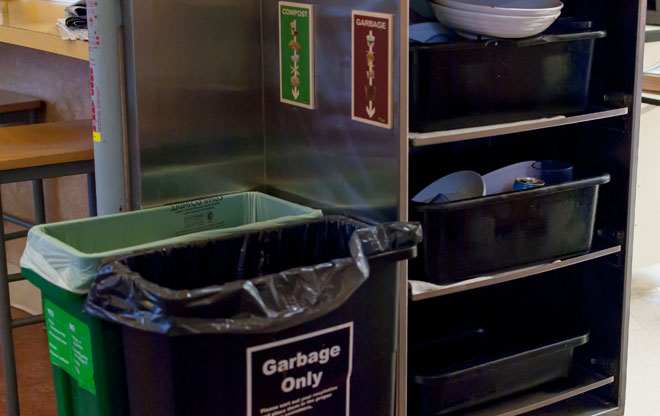
Forcing You to Think about Waste
When you visit Portland be prepared to sort disposables and spend time trying to interpret instructions posted at restaurants and public events. Portland will make you think about what you’re about to throw away. Since rolling out the 2008 Portland Recycles! plan, more than 24,000 businesses have been working toward implementing a five-step process to reduce commercial garbage.
Image: Robin Wilcox 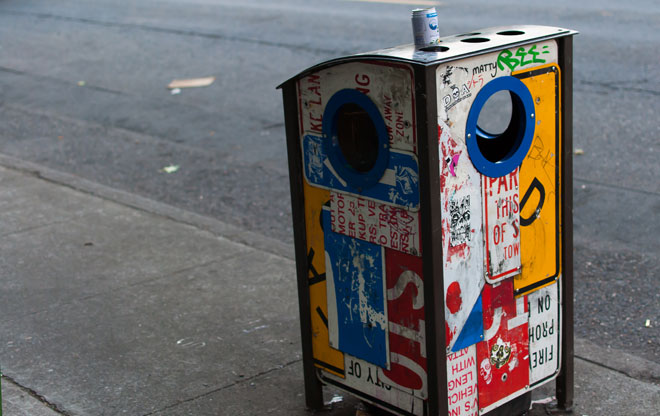
Even Our Garbage Cans Are Recycled
In northeast Portland’s Alberta Arts District, even the garbage receptacles are recycled. Artist Ivan McLean designed 19 trash cans made with recycled street signs. The whimsical arrangement of colorful signs makes graffiti less noticeable. The shape of the cans is drawn from mailboxes. These receptacles feature holes for placing empty plastic and glass bottles on top to make recycling collection easier. The reflective properties from the street signs make the receptacles, which are placed in curb extensions near crosswalks, visible at night.
Image: Robin Wilcox 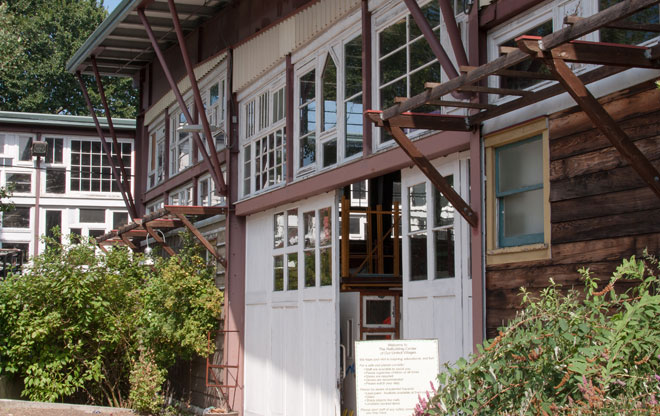
The ReBuilding Center
The ReBuilding Center, which began in 1998, diverts approximately eight tons of building and remodeling materials from landfills every day. Warehouses built in 2005 doubled capacity and serve as demonstration projects to promote green building practices. It's the largest building-material reuse center in the U.S.
Image: Robin Wilcox 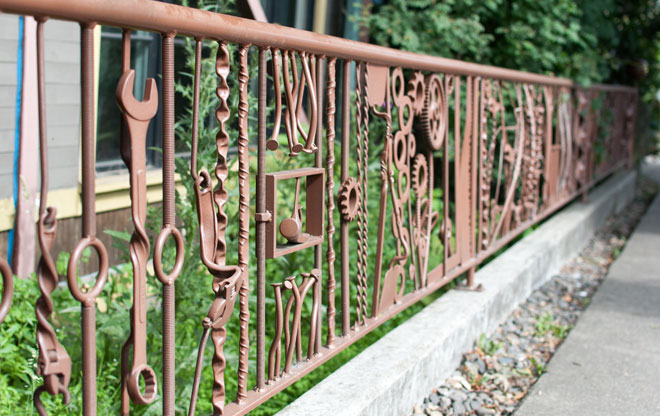
Functional Art
A railing made from salvaged metal contributed by ReBuilding Center employees and neighbors was designed by Mike Suri (Suri Iron). The railing separates the existing sidewalk along Mississippi from an infiltration planter added during expansion of the warehouse in 2005.
Image: Robin Wilcox 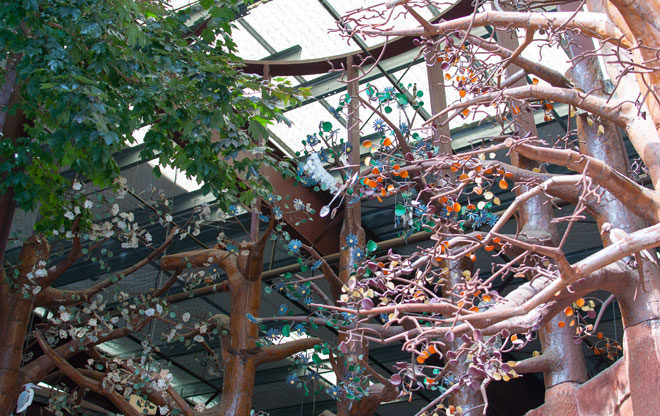
Community Trees
The Community Trees iron sculpture, built as the final component for a public gathering area at the ReBuilding Center’s Mississippi entrance, was unveiled in 2008. The sculpture, also designed by Suri Iron, includes eight life-size tree canopies representing the four seasons. The canopies were formed from remnant steel, and punch-outs were used to create leaves and blossoms. If you look closely, you'll notice several small creatures hidden in the branches.
Image: Robin Wilcox 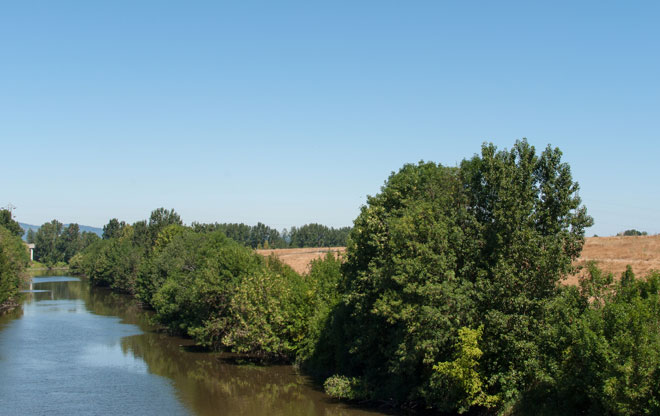
Recycling a Waste Landscape
For over 50 years, this former lakebed near the confluence of the Columbia and Willamette Rivers served as Portland’s primary landfill. Stench from the dump drove businesses and residents out of the nearby St. John’s neighborhood. The landfill officially closed in 1991. In 2013, Metro, the regional government, announced plans to recycle the site and open a public park, St. Johns Prairie, in 2016.
Image: Robin Wilcox 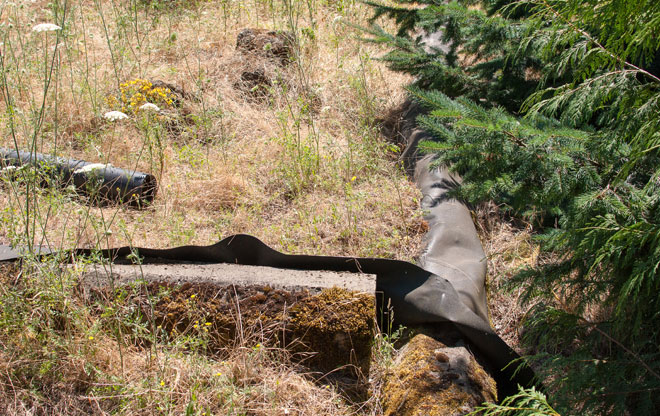
Smart Remediation
A $36 million landfill cover was created to prevent
contaminates from leaching into the environment
and control methane gas from the decomposing waste. Once the cover was in
place, Metro began restoring the landscape by planting native prairie grasses
that have become habitat for threatened wildlife species, including the
streaked horned lark. Methane gas is piped to a nearby cement company and used
as fuel for lime kilns. This captured methane also heats 3,500 homes per
year. Revenue from gas funds future clean-up and transition
efforts.
Image: Robin Wilcox 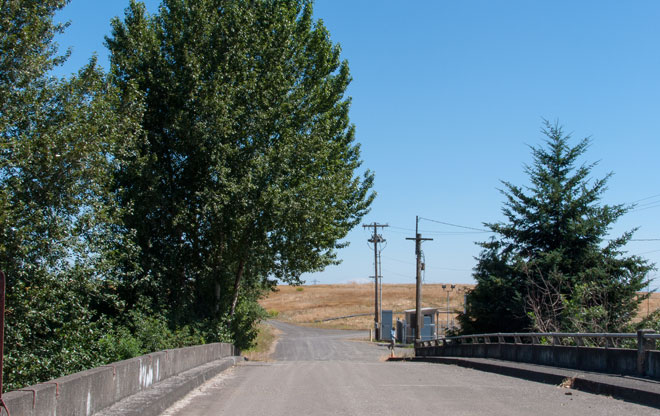
Not Open Yet
Eventually a four-mile trail will connect St. Johns Prairie to the Portland’s 40 Mile Loop, and, for the first time in more than 75 years, the site will open to the public. When St. Johns Prairie opens in 2016, visitors will enjoy views of distant peaks, including Mount St. Helens.
Image: Robin Wilcox 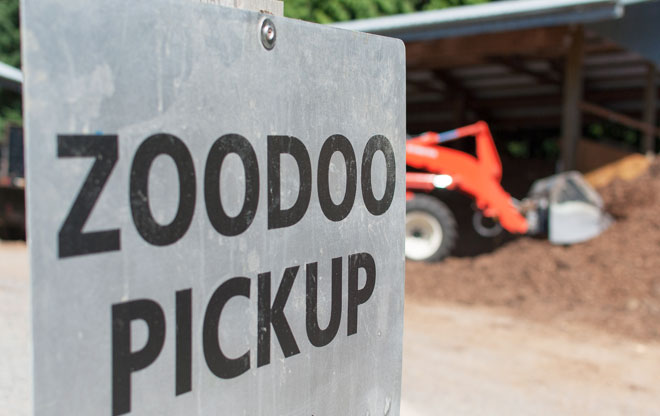
Zoo Doo Pickup
The Oregon Zoo composts an average of 975 cubic yards of fertilizer and diverts 1,350 cubic yards of animal waste from the landfill each day. ZooDoo is a mixture of waste and bedding from the enclosure of nine herbivore species including elephants, goats, hippos, rhinos, zebras, gerenuk, and giraffes. This exotic fertilizer blend has been completely free for 26 years.
Image: Robin Wilcox 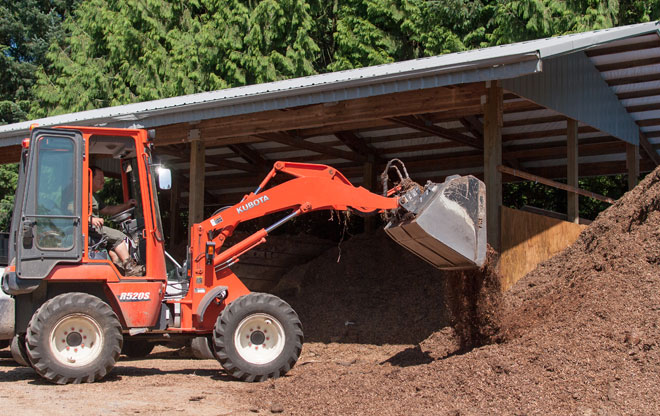
Exotic Fertilizer
You may be shocked to find that a trip to the ZooDoo facility alone isn’t worth a visit to the Oregon Zoo, but if you are already in Washington Park, the friendly staff will be happy to tell you all about the 30-day decomposition and 60-day curing process to create ZooDoo. Fertilizer that isn’t collected by local residents and contractors is used as decorative mulch throughout the zoo.
Image: Robin Wilcox